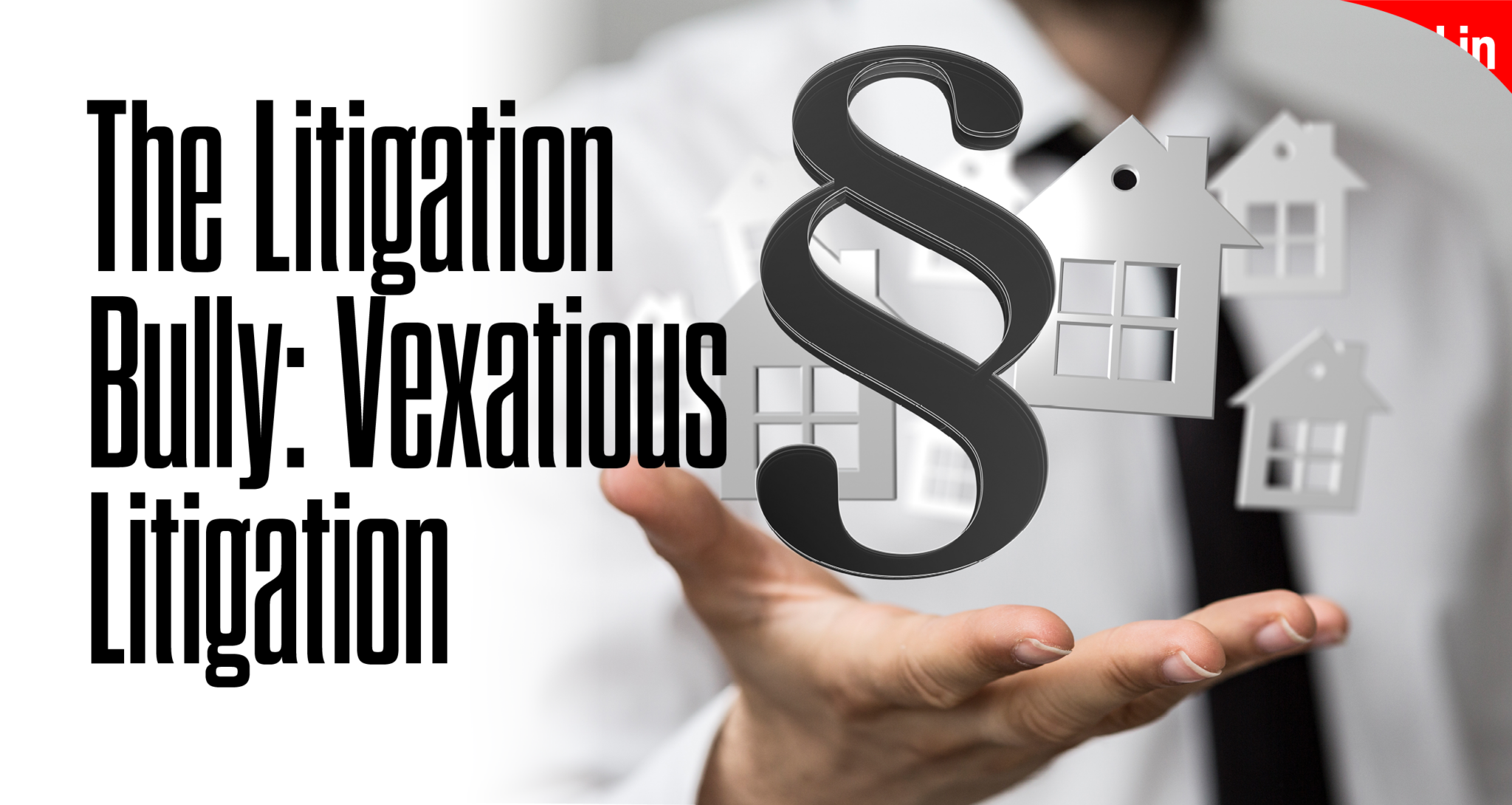
This piece originally appeared in the March 2023 edition of DS News magazine, online now [1].
Litigation fees related to a wrongful foreclosure case can seem unending. Even after prevailing in the lower court, the lender may be subject to a borrower’s appeal, further dragging out issues.
Then, after prevailing on appeal and when it finally feels like it is over, the borrower refiles a new lawsuit, hoping something sticks, in order to further delay the foreclosure process.
To combat the never-ending parade of litigation, various jurisdictions have statutes that allow courts to deem individuals to be “vexatious litigants,” which curtails their ability to file any new lawsuits, without first getting court approval.
Below is a summary of how Arizona and Nevada govern vexatious litigants.
Arizona
Deeming a borrower, or any litigant, a vexatious litigant is a serious consequence, and one that courts do not take lightly. To prevail, the moving party should paint a picture about, not just the borrower’s history of litigation abuse; but also, how, if not stopped, the abuse will continue.
Specific factors that Arizona courts will consider when deciding whether someone should be deemed a vexatious litigant include:
- (a) Repeated filing of court actions solely or primarily for the purpose of harassment.
- (b) Unreasonably expanding or delaying court proceedings.
- (c) Court actions brought or defended without substantial justification.
- (d) Engaging in abuse of discovery or conduct in discovery that has resulted in the imposition of sanctions against the pro se litigant.
- (e) A pattern of making unreasonable, repetitive and excessive requests for information.
- (f) Repeated filing of documents or requests for relief that have been the subject of previous rulings by the court in the same litigation. [Emphasis Added] A.R.S. § 12-3201(C), A.R.S. § 12-3201 (E)(1) (a-f).
Lenders usually rely on subsections (a), (c), and (f) to support their motion to deem borrowers as vexatious litigants. The more unsuccessful litigation (or bankruptcies) the borrower files, the higher likelihood the court will deem the borrower a vexatious litigant. Unfortunately, there is no bright line rule on how many unsuccessful lawsuits or baseless motions are needed before the court deems the borrower a vexatious litigant.
In fact, the same motion may be granted by one judge and then denied by another judge. While the unpredictability of whether a motion will be successful is frustrating, the upside to a successful motion is often worth the cost because it stops borrowers in their tracks and ends the seemingly never-ending cost of litigation defense and delays.
A vexatious litigant will be barred from filing any “new pleading, motion or other document without prior leave of the court.” A.R.S. § 12-3201(B).
Nevada
Unlike Arizona, Nevada does not have a specific vexatious litigant statute. Instead, Nevada looks to the Federal Ninth Circuit for guidance, which has defined vexatious litigation as “without reasonable or probable cause or excuse, harassing, or annoying.” Microsoft Corp. v. Motorola, Inc., 696 F.3d 872, 886 (9th Cir. 2012). To determine whether the litigant’s conduct is frivolous or harassing, the court evaluates both the number and content of the filings as indicia of the frivolousness of the litigant’s claims. Albanese v. Las Vegas Metro. Police Dep’t, 2:17-cv-01600-JAD-VCF, 2017 WL 2622759, at *6 (D. Nev. June 15, 2017).
Additionally, Nevada courts also utilize similar factors outlined above from Arizona in evaluating what constitutes “harassing” or “without reasonable cause.” Again, there is no bright line number of unsuccessful lawsuits or motions needed to deem a borrower a vexatious litigant; however, usually a second motion to deem the borrower vexatious will gain more traction. When successful, the borrower will be barred from continuing to file suits and delay the foreclosure without first obtaining court approval to file.
Conclusion
Regardless of whether your case is in Nevada or Arizona, it is important to emphasize the mantra of “if you do not succeed, try, try again.”
Courts are inherently sympathetic and skittish to deem a pro se borrower litigant (or any litigant for that matter) as “vexatious,” given the effects of doing so (i.e. forcing them to obtain leave before any new filings).
Thus, for instance, if you prevail on a Motion to Dismiss in “Case A,” and the borrower subsequently brings an identical “Case B,” you are well within your right to seek not only a dismissal, but also an order deeming the borrower vexatious. In so doing, a Court will likely grant your request for a dismissal, but in many cases deny the portion deeming the borrower vexatious. But that does not mean that portion of the Motion was for naught.
Because borrowers who file two unsuccessful lawsuits are highly likely to do it again and again, anything to forestall the inevitable foreclosure.
Thus, when “Case C” eventually comes about, the lender has already greased the wheels with the court and can file a renewed motion, highlighting how its fears became realized when the borrower filed yet another meritless lawsuit. At that point, the court should seriously consider deeming overly aggressive borrowers a vexatious litigant, preventing them from filing new litigation without first obtaining court approval after proving to the court that the proposed lawsuit has merit.
Disclaimer: The above information is intended for information purposes alone and is not intended as legal advice. Please consult with counsel before taking any steps in reliance on any of the information contained herein.
